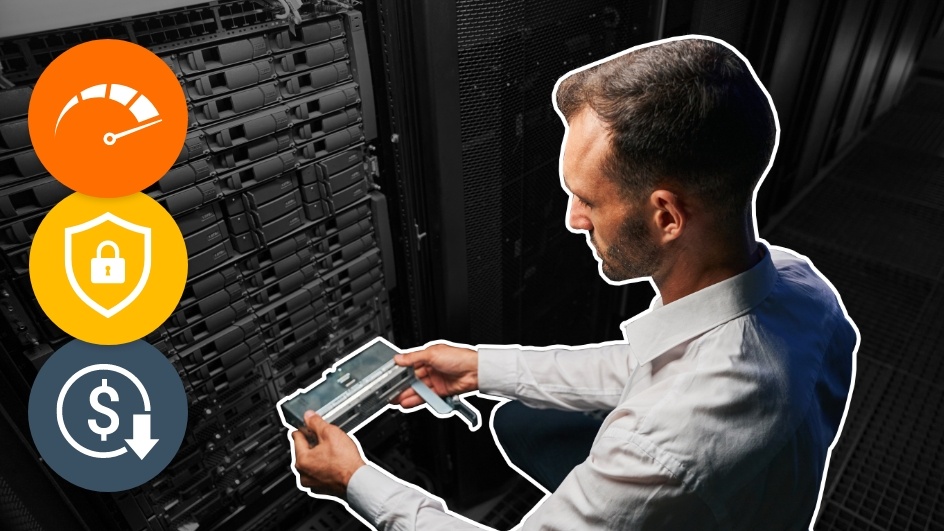In today's rapidly evolving digital landscape, keeping your IT infrastructure up to date is not just a luxury—it's a necessity. As technology advances, both hardware and software need to keep pace to maintain optimal performance, security and efficiency. Running outdated hardware or operating systems can lead to a host of issues. Let’s explore why upgrading your IT infrastructure is crucial and how it impacts your business.
1: Performance Degradation Due to Advancing Technologies
With the rapid advancement of web services, cloud technologies and software applications, the demand on your IT infrastructure continues to increase. Older hardware and operating systems may struggle to keep up with these demands, leading to a significant decrease in performance. Here’s why:
- Increased Resource Demands: Modern applications and cloud services are designed to take advantage of the latest hardware capabilities, such as faster processors, more memory and enhanced graphics capabilities. If your infrastructure is outdated, it may not have the necessary resources to run these applications efficiently, resulting in slow performance and reduced productivity.
- Incompatibility with New Software: As software evolves, it often requires the latest hardware or operating system updates to run effectively. Older systems may not support new software features or might not be compatible at all, causing disruptions in your workflow and potentially leading to data loss or corruption.
- Reduced Efficiency: Newer hardware is designed to handle multitasking and large data sets more effectively. Without these upgrades, your systems will run slower, causing frustration for employees and potentially affecting customer satisfaction.
2: Security Vulnerabilities
Security is a top priority for any business, and outdated IT infrastructure poses a significant risk. Older operating systems and hardware are often more vulnerable to cyberattacks for several reasons:
- Lack of Security Updates: Manufacturers typically stop providing security updates and patches for older hardware and operating systems. Without these updates, your systems become increasingly vulnerable to malware, ransomware and other security threats.
- Outdated Security Protocols: Modern security standards and protocols are continually evolving to counteract new threats. Outdated systems may not support the latest encryption standards or security features, leaving sensitive data exposed to potential breaches.
- Compliance Risks: Many industries have strict compliance regulations regarding data protection. Running outdated systems can put your business at risk of non-compliance, leading to potential fines, legal action and reputational damage.
3: Increased Operational Costs
If improving productivity and security isn't enough of a reason to upgrade, an outdated infrastructure can also hit your bottom line with increased costs. Here’s how:
- Higher Maintenance Costs: Older hardware often requires more frequent repairs and replacements, which can add up over time. In contrast, new hardware typically comes with warranties and requires less maintenance, reducing overall costs.
- Increased Energy Consumption: Newer hardware is generally more energy-efficient than older models. Running outdated equipment can lead to higher energy bills, which could be a significant expense, especially for large IT infrastructures.
- Downtime and Productivity Loss: System failures and downtime are more common with older hardware and unsupported operating systems, leading to lost productivity and potential revenue loss. Upgrading your infrastructure minimizes these risks, ensuring smoother operations and uninterrupted service.
4: Enhanced Functionality and Features
Upgrading to the latest hardware and operating systems provides access to new features and functionalities that can enhance your business operations:
- Improved User Experience: Modern operating systems offer enhanced user interfaces, better support for high-resolution displays and improved touch-screen capabilities. This contributes to a better overall user experience.
- Advanced Tools and Capabilities: Upgraded systems often come with new tools and features that can help improve productivity, streamline workflows and enhance collaboration among team members.
- Better Integration with Modern Technologies: Newer hardware and operating systems are designed to integrate seamlessly with the latest technologies, such as AI, machine learning and advanced analytics. This integration can provide valuable insights and improve decision-making processes.
5: Future-Proofing Your IT Infrastructure
Investing in new hardware and operating systems is also about future-proofing your IT infrastructure. Technology is advancing at a rapid pace, and upgrading now prepares your business for future changes. This proactive approach ensures your systems are ready to support future innovations, reducing the need for frequent upgrades and providing a solid foundation for growth.
Keeping your IT up to date means your business stays secure, efficient and cost-effective. Talk with our IT experts and we'll assess your current IT infrastructure and plan the upgrades you need to stay competitive and secure as tech keeps evolving.



